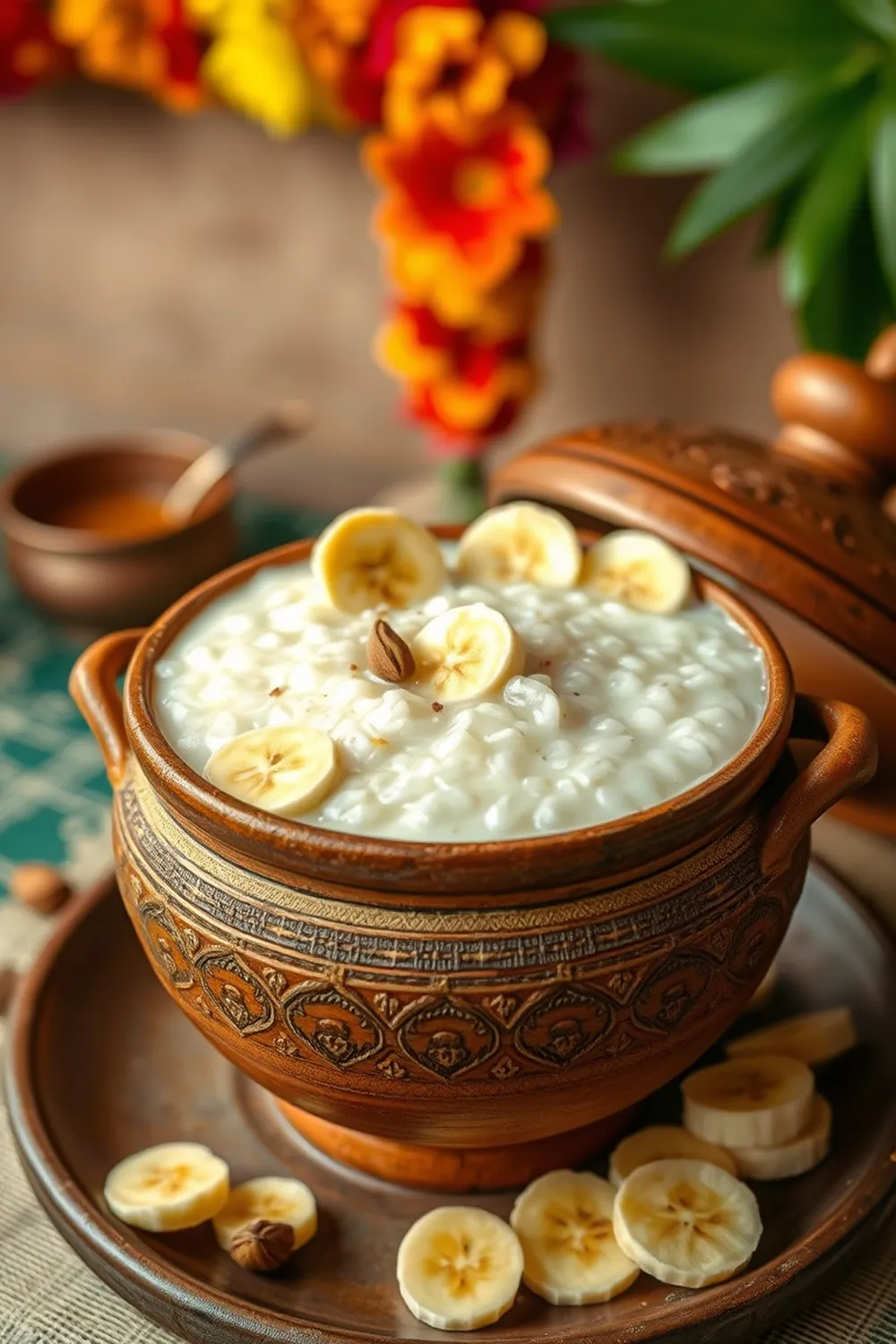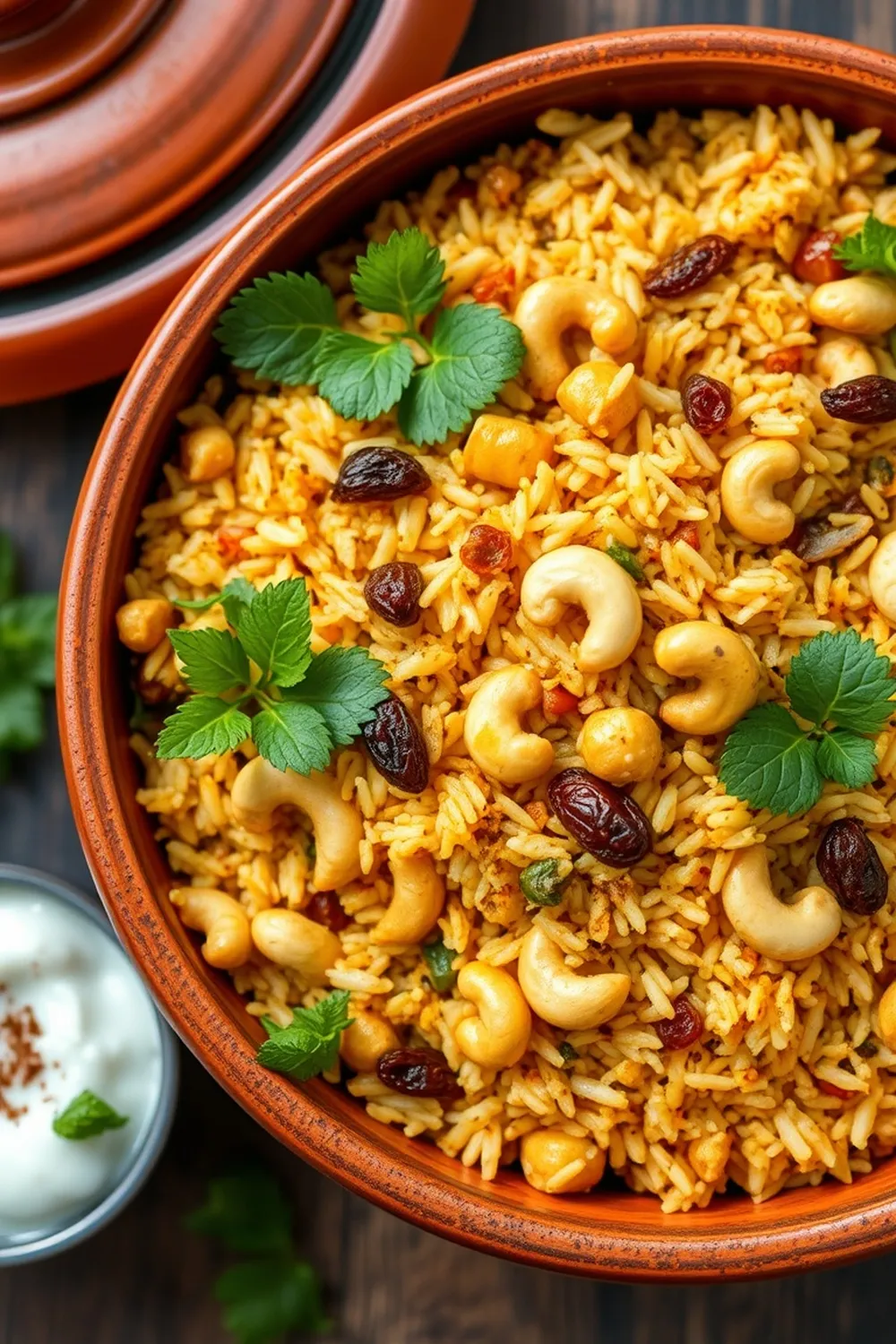- Heat ghee in a pressure cooker. Add millet and roast for 2-3 minutes on low heat, stirring frequently.
- Pour in milk and stir well. Place a small plate *under* the millet inside the cooker to prevent sticking.
- Secure the lid and cook until one whistle. Reduce heat to low and simmer for 20-25 minutes.
- Once the pressure releases naturally, open the cooker. Remove the plate and stir the payasam.
- Mix in sugar until dissolved. Add any desired garnishes (like cardamom or nuts). Serve warm to enjoy.
- Calories:250 kcal25%
- Energy:1046 kJ22%
- Protein:6 g28%
- Carbohydrates:40 mg40%
- Sugar:25 mg8%
- Salt:50 g25%
- Fat:8 g20%
Last Updated on 4 months by Neha Deshmukh
Millet Payasam Recipe – Easy Indian Millet Kheer for Wellness
Hey everyone! If you’re anything like me, you’re always on the lookout for desserts that are both comforting and good for you. This Millet Payasam (or Kheer, as it’s known in some parts of India) is exactly that! I first made this when trying to incorporate more millets into our family’s diet, and it quickly became a favorite. It’s creamy, subtly sweet, and feels like a warm hug in a bowl. Let’s get cooking!
Why You’ll Love This Recipe
This isn’t your grandma’s traditional rice payasam (though, don’t get me wrong, I love that too!). This version uses millet, a wonderfully nutritious grain, making it a lighter and healthier treat. It’s surprisingly easy to make, especially using the pressure cooker method. Plus, it’s naturally gluten-free and can easily be adapted to be vegan! Honestly, it’s the perfect dessert for a weeknight or a festive occasion.
Ingredients
Here’s what you’ll need to whip up this delicious Millet Payasam:
- 2 tablespoons millet (approx. 30g)
- 4 cups full cream milk (approx. 950ml)
- ⅓ cup sugar (approx. 67g) – adjust to your sweetness preference!
- 1 teaspoon ghee (approx. 5ml)
Ingredient Notes
Let’s talk ingredients! A few little tips can make all the difference.
- Benefits of Millet: We’re using millet here for a reason! It’s packed with fiber, protein, and essential minerals. It’s a fantastic alternative to rice, especially if you’re looking for a healthier dessert option. I prefer using barnyard millet (Sanwa) for payasam, but you can experiment with other varieties too.
- Ghee’s Role in Ayurveda: Ghee isn’t just about flavor; it’s a cornerstone of Ayurvedic cooking. It adds a beautiful richness and is believed to have numerous health benefits. Don’t skip it!
- Regional Milk Variations: Full cream milk gives the richest, creamiest result. However, you can use any type of milk you prefer – toned, double cream, or even cashew milk for a vegan version (more on that later!). In some South Indian homes, they even add a touch of condensed milk for extra sweetness and thickness.
Step-By-Step Instructions
Alright, let’s get down to business! Here’s how to make this Millet Payasam:
- First, heat the ghee in a pressure cooker over low heat.
- Add the millet and roast it for about 2 minutes. You’ll notice a lovely nutty aroma – that’s what we’re looking for!
- Pour in the milk and give it a good stir. Now, here’s a little trick my mom taught me: place a small, heatproof plate inside the cooker, resting on the millet. This prevents the payasam from sticking to the bottom.
- Secure the lid of the pressure cooker and cook for one whistle. Once you hear the whistle, reduce the heat to low and let it simmer for another 30 minutes.
- Once the pressure has released naturally, carefully open the cooker. Remove the plate and give the payasam a gentle stir.
- Finally, add the sugar and mix until it’s completely dissolved. Taste and adjust the sweetness if needed.
- Serve warm and enjoy the simple, natural flavors!
Expert Tips
A few things I’ve learned along the way:
- Roasting is Key: Don’t skip roasting the millet! It enhances the flavor and prevents the payasam from becoming mushy.
- Low and Slow: Simmering on low heat is crucial for a creamy texture.
- Stir Gently: Be gentle when stirring, especially after the pressure cooking. You don’t want to break down the millet too much.
Variations
Want to switch things up? Here are a few ideas:
- Vegan Adaptation – Using Plant-Based Milk: Swap the full cream milk for cashew milk, almond milk, or coconut milk. It’s just as delicious! My friend, Priya, swears by using coconut milk for a tropical twist.
- Gluten-Free: This recipe is naturally gluten-free, but always double-check the packaging of your ingredients to be sure.
- Adjusting Sweetness: Feel free to adjust the amount of sugar to your liking. You can also use jaggery or honey as a natural sweetener.
- Festival Adaptations – Pongal/Onam: During Pongal or Onam, add a pinch of cardamom and a few chopped nuts (cashews, almonds, pistachios) for a festive touch.
Serving Suggestions
This Millet Payasam is wonderful on its own, but here are a few ideas to elevate your serving:
- Garnish: Sprinkle with chopped nuts, a pinch of cardamom, or a few saffron strands.
- Temperature: While traditionally served warm, it’s also lovely chilled.
- Pairing: Enjoy it after a light meal or as a comforting dessert on a cozy evening.
Storage Instructions
Leftovers? Lucky you! Store the Millet Payasam in an airtight container in the refrigerator for up to 3 days. It might thicken slightly upon cooling, so you can add a splash of milk when reheating.
FAQs
Let’s answer some common questions:
- Is millet payasam good for diabetics? Yes, it can be! Millet has a lower glycemic index than rice, making it a better option for those managing blood sugar levels. However, portion control is still important, and it’s best to consult with a healthcare professional.
- Can I make this payasam with other millets? Absolutely! Barnyard millet (Sanwa) is traditional, but you can experiment with foxtail millet (Kangni) or little millet (Kutki).
- What is the best type of ghee to use for payasam? Cow ghee is considered the most traditional and flavorful, but any good quality ghee will work.
- How can I prevent the payasam from sticking to the bottom of the cooker? The plate trick works wonders! Alternatively, you can use a non-stick pressure cooker.
- Can this be made on the stovetop instead of a pressure cooker? Yes, you can! Simmer the millet and milk in a heavy-bottomed pot for about 45-60 minutes, stirring frequently to prevent sticking.









